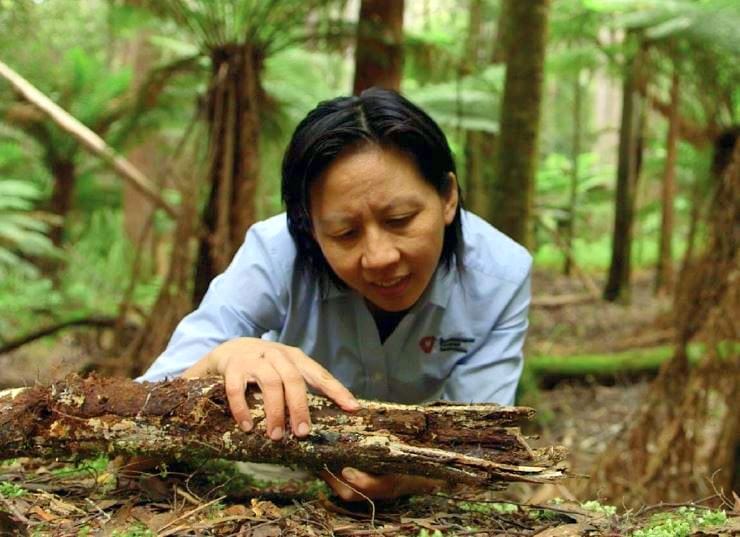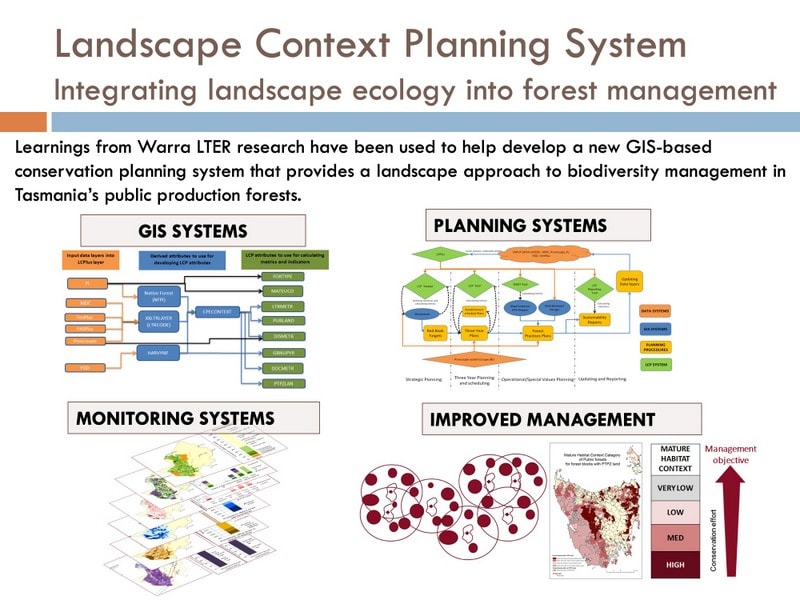Sustainable Timber Tasmania’s senior conservation planner is using the ecological understandings generated from the TERN Warra Tall Eucalypt SuperSite—Australia’s oldest LTER site—to develop a landscape approach to biodiversity management in Tasmania’s temperate native forests.
They say, if you can’t monitor it, you can’t manage it. This is certainly the case at the TERN Warra Tall Eucalypt SuperSite–Australia’s oldest Long Term Ecological Research (LTER) site—where the ecological understandings coming out of the site have been instrumental in the development of a new forest conservation planning system.
Research from the site is being used to guide Sustainable Timber Tasmania’s forest retention strategies and native forest harvesting plans and help make sure forest management is ecologically sustainable.

Research at Australia’s oldest LTER site
The TERN Warra LTER site—the southernmost LTER site in East-Asia-Pacific—is situated in one of the most productive terrestrial ecosystems in the world, in the cool, temperate wet forest biome. This site uniquely spans environmental, altitudinal and socio-ecological gradients, from the ancient gondwanic alpine conifer forests to the lowland new world temperate eucalypt forests, and extends from the Tasmanian Wilderness World Heritage Area in the west to the public native forests managed for timber production in the east.
There has been a plethora of research output from Warra, from understanding the fundamental ecological processes and dynamics in tall wet eucalypt forest, and detailed baseline monitoring of biota including the cryptic species, to multidisciplinary research aimed at understanding the responses of this biota to natural wildfire disturbance processes compared to anthropogenic disturbance regimes
“This research has helped drive improvement in forest management, by giving forest managers a greater understanding of seeing the forest as a complex adaptive system that requires a multi-scaled approach to biodiversity management, and providing insights on how to better harmonise timber production and conservation objectives through applying new practical forest retention strategies.
These strategies are being applied in Tasmania’s tall wet eucalypt forests at a site scale, by adopting variable retention silviculture in mature forests; and at a local scale, by implementing a long-term retention objective that considers the surrounding landscape context.”
Dr Marie Yee, Sustainable Timber Tasmania’s Senior Conservation Planner.
A biodiversity landscape approach to forest conservation planning
Marie and her colleagues at Sustainable Timber Tasmania, the state forest manager, have used these learnings to develop and operationalise the Landscape Context Planning System—a new, novel way of implementing a biodiversity landscape approach.
The system uses GIS technology to enable routine reporting on the environmental and socio-ecological attributes of the landscape at multiple spatial scales, including monitoring land tenure, forest heterogeneity, forest maturity, habitat fragmentation, forest connectivity, and the cumulative effect of past, present and future harvest operations on biodiversity values.

“Ongoing research at Warra will be used to help monitor the effectiveness of current management and any adopted strategies on biodiversity and forest health.
This includes current projects that utilise research infrastructure and new technologies provided by TERN and site partners, the University of Tasmania, such as bird monitoring using bioacoustic technology, habitat mapping using airborne and spaceborne LiDAR data, and monitoring carbon-fluxes in relation to the forests’ eco-physiological response to weather.”
Marie also says that the Landscape Context Planning System has the capacity to adapt to the latest data and monitoring at the TERN site, such that forest management can keep up with new information, unexpected perturbations, and emerging ecological trends.
Marie’s work in forest conservation is a fantastic example of how on-the-ground data collection by TERN’s research resources and facilitation of landmark science research is directly transferrable into sustainable management outcomes. TERN looks forward to furthering our support of Sustainable Timber Tasmania’s work and all our other industry partners who rely on the research repository data from TERN.
- Marie’s work on the Landscape Context Planning System was recently awarded the fourth most striking example of LTER research in the International Long Term Ecological Research Network (ILTER) ‘Most Striking Case’ competition, open globally to all long term ecosystem researchers who use national research infrastructure in their projects. Congratulations Marie!
- Keep an eye out in the TERN newsletter for more on research at Warra using TERN’s bioacoustics monitoring equipment that has some key insights for forest management.
- For more information on the TERN Warra Tall Eucalypt SuperSite click here.






